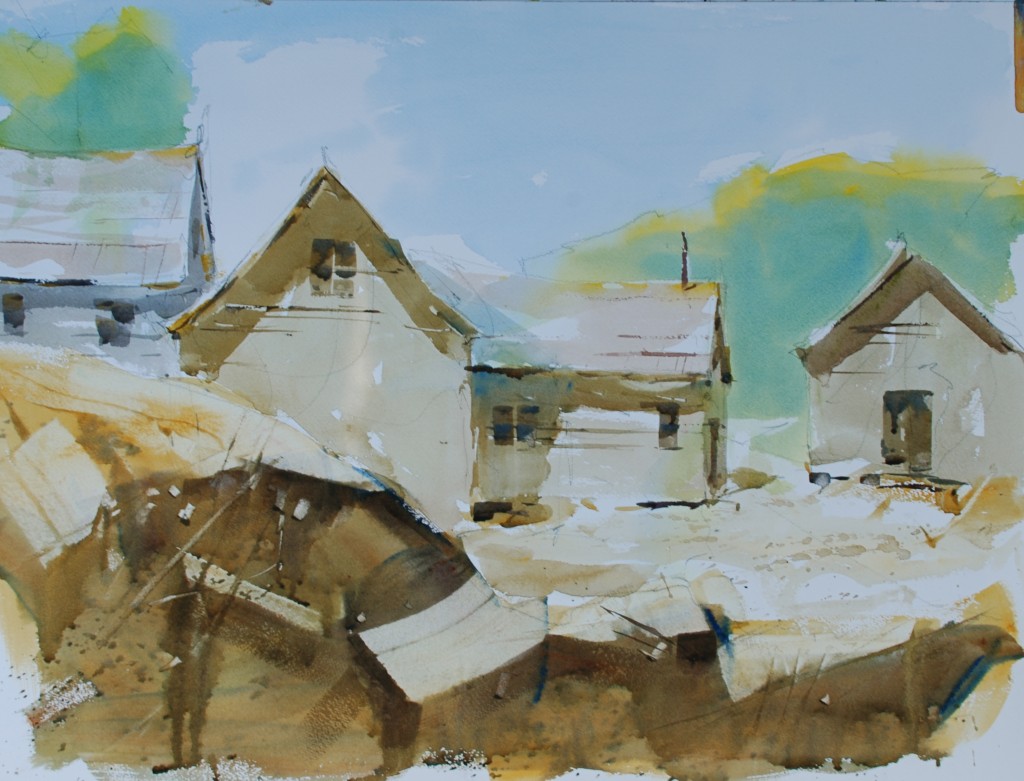
In this jumpstart I want you to again start by dividing your paper into four sections, and then sketch four simple subjects into each square, think of subject matter that can be assigned a representational color feeling, nothing too complicated. The goal is to get the colors both light and dark correct not paint an elaborate painting. I want you to really try to get the feeling of a fairly accurate color of the shadow. Sounds easy, but first I have to give you a few thoughts to consider before starting. In order to get a good shadow you first have to get the light stated right and this is usually the first major problem, keep the value of the lighted area light enough to really say “in light”, if it is too light the shadow will have to be too dark and opaque. Next I want you to keep your shadows translucent, and paint them with a quick decisive brush mark, let the under color to shine through. Try not to go back over top of the shadow wash multiple times, it will become lifeless and be too dark. Lastly, the color of the shadow is the color of the object it is on, it is darker, cooler and less intense but it is the color of the object, blue on blue, grey on grey, green on green. Once you get this down the world of representational painting really opens up for you, no longer is every shadow purple or some variation of blue. Do these exercises quickly, many colors and many types of shadows it is worth the effort.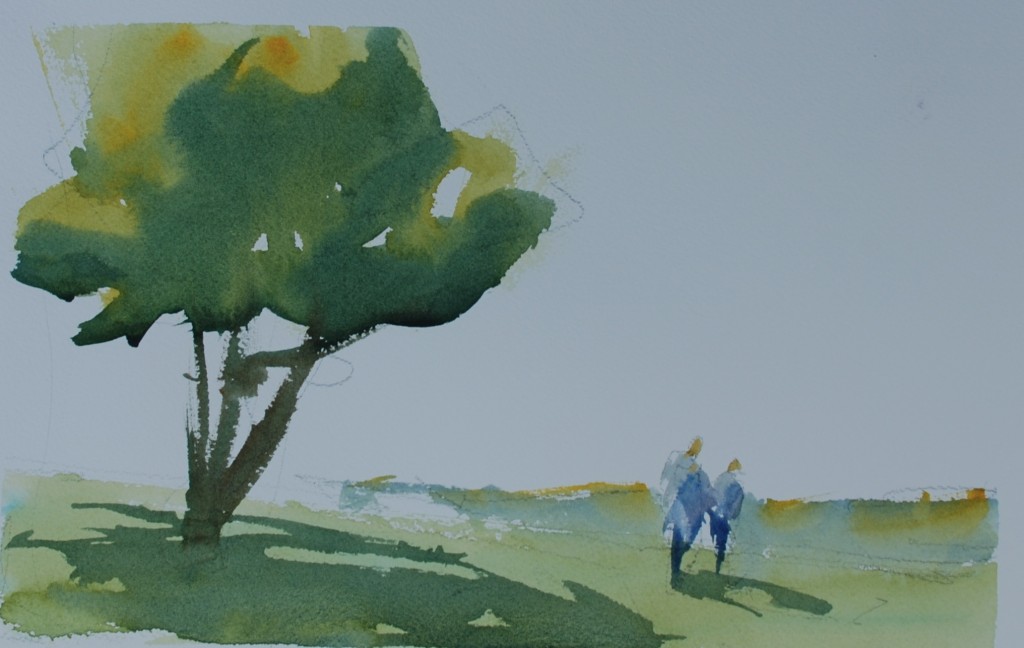 Make sure that you get the green color light enough I added a little yellow to the mix to get more light in the wash. I then added more pigment and a little alizirin crimson to the mix to make it darker a quickly ran it over the light green.
Make sure that you get the green color light enough I added a little yellow to the mix to get more light in the wash. I then added more pigment and a little alizirin crimson to the mix to make it darker a quickly ran it over the light green.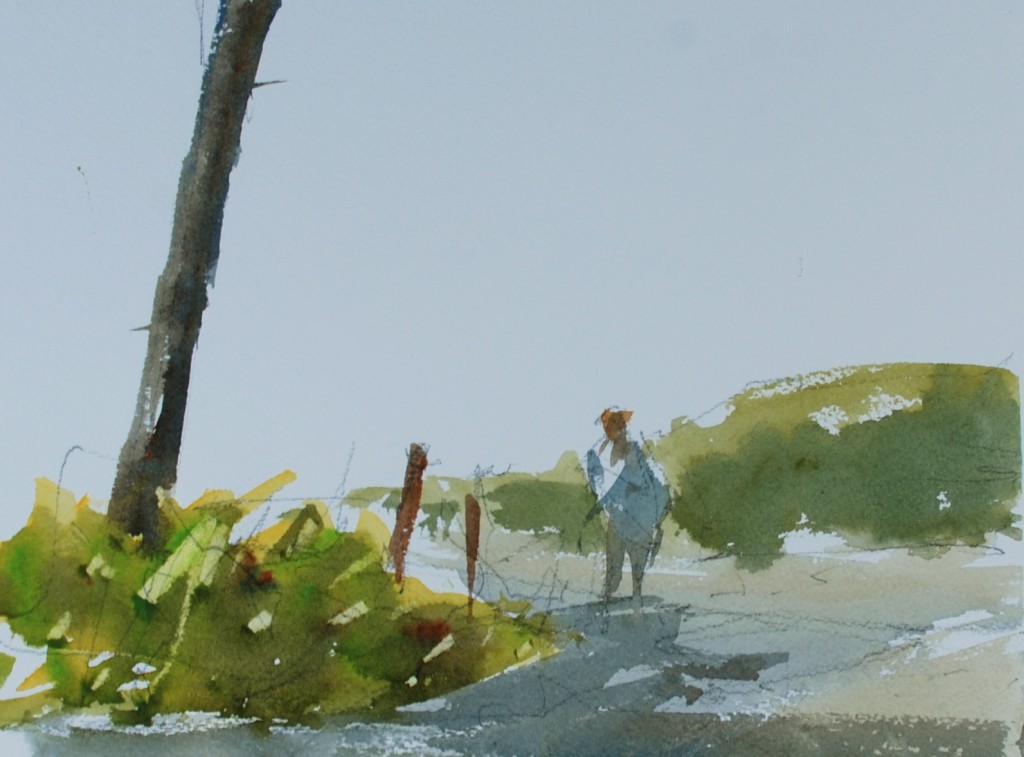 In this exercise, I am using a grey mixed from burnt sienna and ultramarine blue. I added a lot of water and then just darkened the wash with less water. Pull the shadow with the side of a round brush.
In this exercise, I am using a grey mixed from burnt sienna and ultramarine blue. I added a lot of water and then just darkened the wash with less water. Pull the shadow with the side of a round brush.
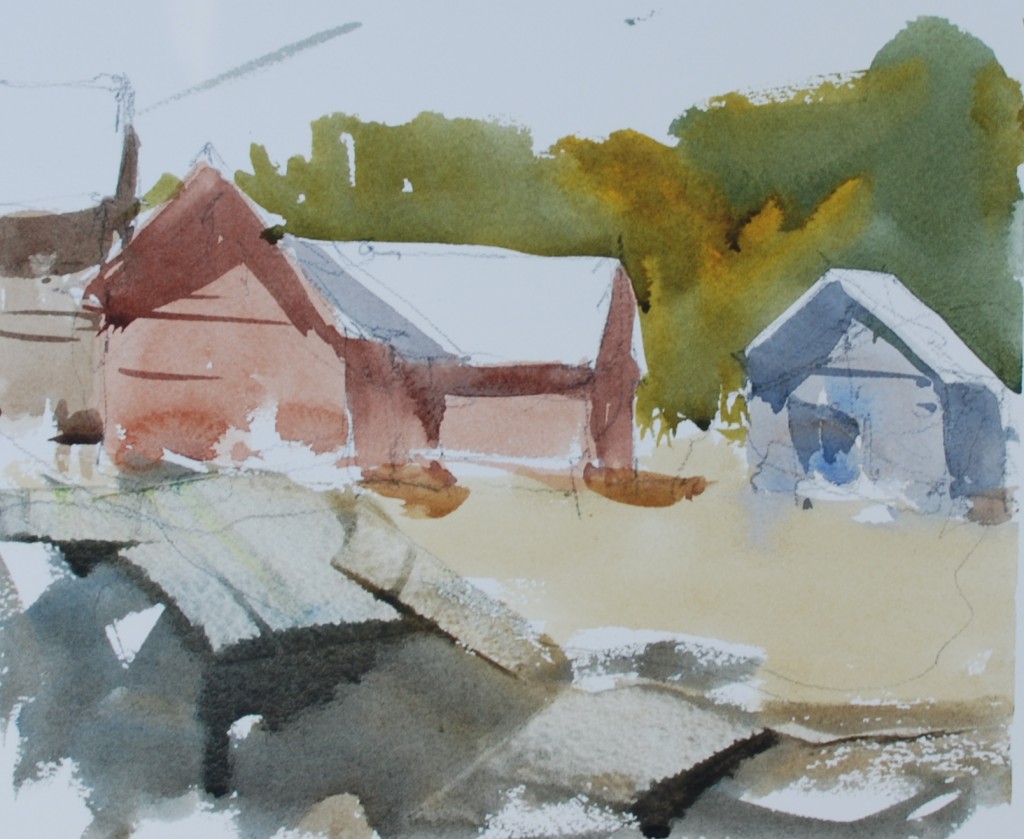 This exercise has multiple colors and the trick is to make sure the shadows have a similar value and feel related although different colors.
This exercise has multiple colors and the trick is to make sure the shadows have a similar value and feel related although different colors.
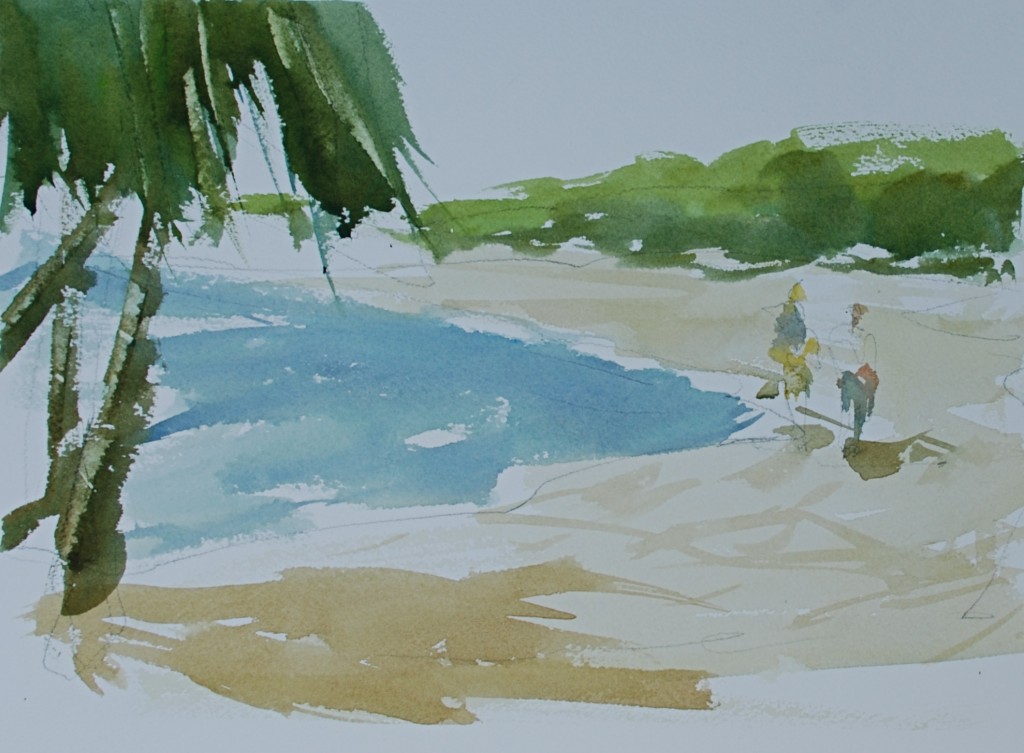
The sand color I used in this quick study is raw sienna and a little cobalt blue and when I darkened the color I used a little burnt sienna to just take some of the lightness away.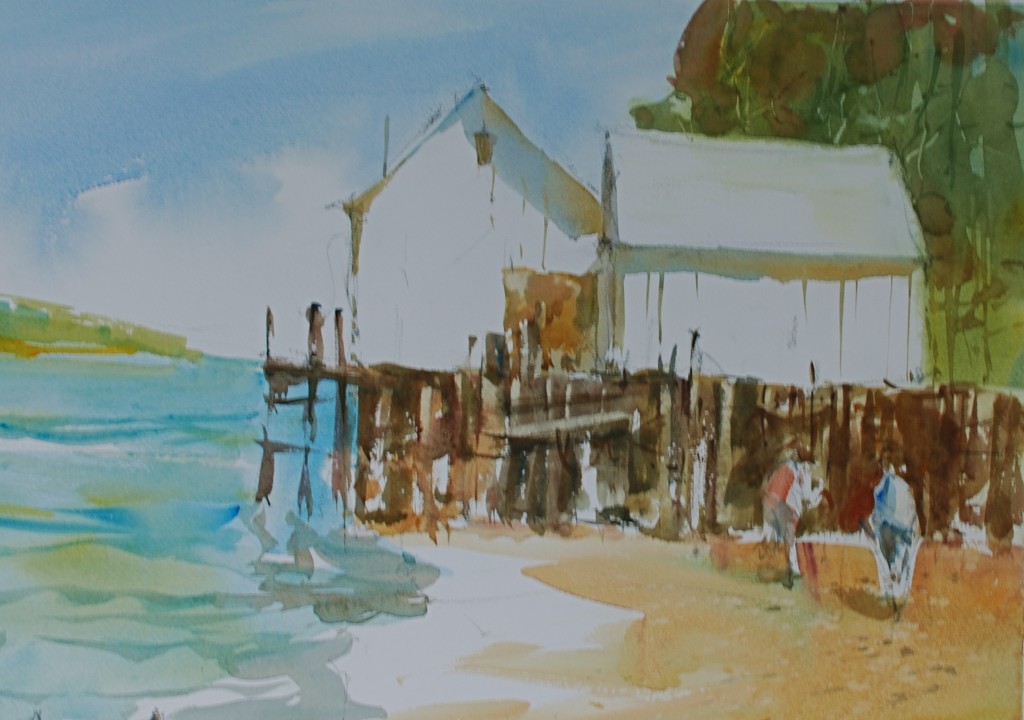 I wanted to add this to the end of the jumpstart so you can get a feel for a more complex arrangement of shadows. Have fun and keep painting. Keep these quick and play with a wide variety of colors.
I wanted to add this to the end of the jumpstart so you can get a feel for a more complex arrangement of shadows. Have fun and keep painting. Keep these quick and play with a wide variety of colors.
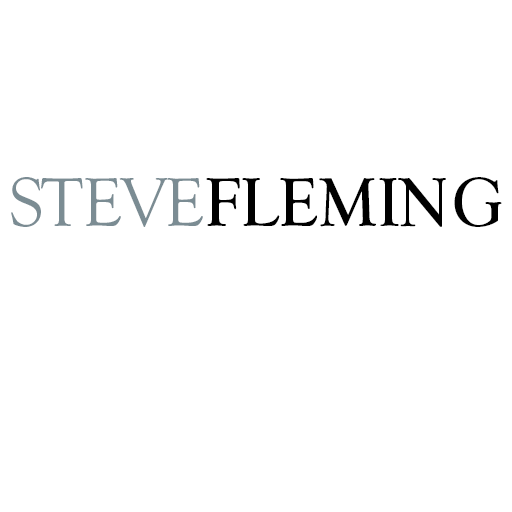


Steve, your shadows, as always, are wonderful So are the landscapes built around them.
I really like this one, and appreciate the help with shadows!